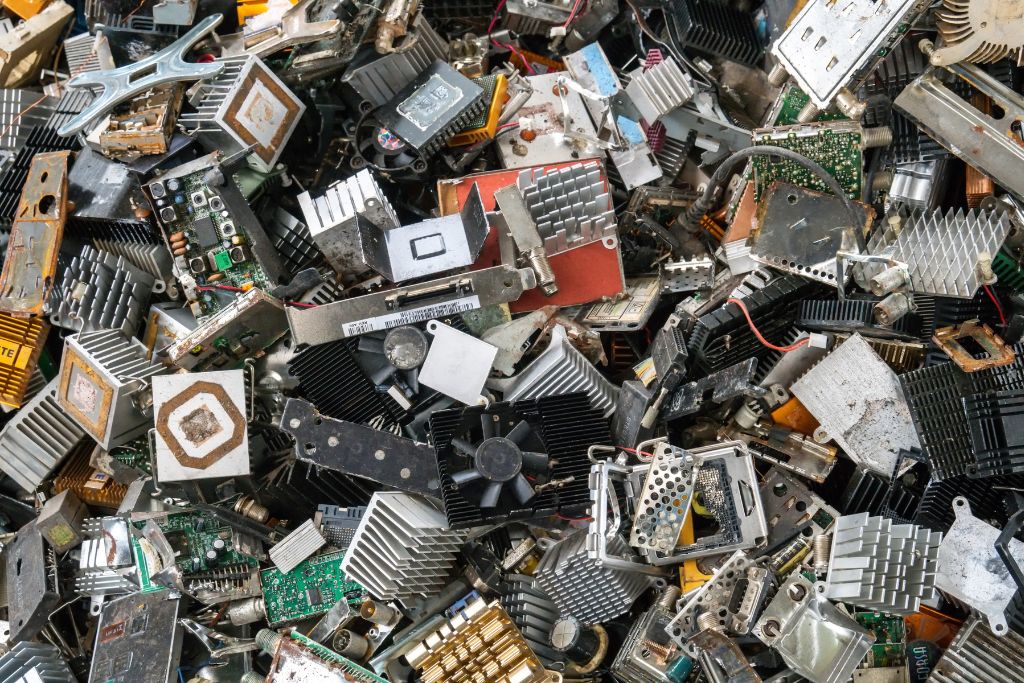Less than a quarter of the record 62 billion kilograms of electronic waste (or e-waste) generated globally in 2022 was recycled, according to a new analysis.
—
The massive digitalisation process the world has undergone in recent decades has led to an unprecedented demand for electronic devices. But while the mass electrification has significantly changed the way we live our lives, allowing us to reach and connect with the most remote areas on the planet, this revolution has also led to a global crisis: electronic waste.
In 2022, the world generated a record 62 billion kilograms of electronic waste, or e-waste – equivalent to an average of 7.8 kg per capita per year and up 82% from 2010, according to the latest Global E-Waste Monitor by the UN Institute for Training and Research (UNITAR).
E-waste refers to discarded electric appliances. It consists of devices that owners no longer want, have stopped working, or are obsolete compared to new emerging technologies, including video cameras, remote controls, laptops, hard drives, televisions, but also e-cigarettes, dishwashers, and photovoltaic panels.
With the boom in electronic devices came the need to find appropriate ways to discard this type of waste, which contains materials such as lead, cadmium, and beryllium that make it highly toxic for human health and the environment. When e-waste ends up in landfills, the toxic materials dissolve into a sludge that permeates at the bottom of the landfill, before sinking into the ground in a process known as leaching. The issue arises when huge amounts of e-waste results in large toxic dissolved pools that infiltrate the soil, and flow into the water bodies nearby, affecting public health.
Unfortunately, recycling rates remain dangerously low worldwide, making e-waste a huge global crisis that requires “urgent attention,” as put by UNITAR’s executive director Nikhil Seth.
As highlighted in the report, only 22.3% of the total electronic waste generated in 2022 was documented as formally collected and recycled in an environmentally sound manner. In other words, e-waste generation is outpacing the rise in formal recycling by a factor of almost 5.
E-waste recycling is a complex process that involves manual sorting, examination of electronic devices for functional parts, de-manufacturing to remove hazardous materials, shredding, and separation of metals and non-magnetic materials. Skilled workers play a crucial role in ensuring the safe and efficient operation of the recycling process. Valuable metals are separated using magnets and mechanical processing, while non-magnetic materials are separated using water based on their relative density. Before the recycled materials are sold, a final check is conducted to extract any remaining valuable materials from the plastic components.
More on the topic: What Is E-Waste Recycling and How Is it Done?
The complexities and costs associated with the recycling process allow for huge shares of e-waste to be handled improperly, both in high-income countries with developed e-waste management infrastructure and in lower-middle-income countries with no developed infrastructure.
The UN body estimates that this rate of e-waste mismanagement leads to the annual release of approximately 58,000 kilograms of mercury and 45 million kilograms of plastics containing brominated flame retardants into the environment.
According to the report, all continents lag in terms of recycling. Europe, the biggest e-waste generator, boasts the highest recycling rate of any other country. This, however, remains dangerously low, at just 42.8%.
Globally, only 42% of countries have adopted some kind of e-waste policy, regulation, or legislation, though enforcement remains “a genuine challenge globally,” mainly owing to a lack of collection and recycling targets, low awareness, and few appropriate disposal options, according to the report.
Behind its environmental and health impacts, e-waste management costs the world an estimated US$37 billion every year. At the same time, raw materials contained in discarded electronic devices – such as gold, copper, iron, as well as cobalt, a vital metal for the production of batteries – offer a chance for huge profits. The metals contained in the e-waste generated globally in 2022 alone – approximately 31 million tonnes – were valued at US$91 billion, including US $19 billion in copper, US $15 billion in gold, and US $16 billion in iron.
This underlines the importance of increasing recycling rates globally. A 60% global recycling rate by the decade’s end would lead to economic, health, and environmental benefits more than US$38 billion higher than the associated costs.
“No more than 1% of demand for essential rare earth elements is met by e-waste recycling. Simply put: Business as usual can’t continue. This new report represents an immediate call for greater investment in infrastructure development, more promotion of repair and reuse, capacity building, and measures to stop illegal e-waste shipments. And the investment would pay for itself in spades,” said UNITAR senior scientific expert and lead author Kees Baldé.
You might also like: Can We Recycle Spent Renewable Energy Infrastructure?


















